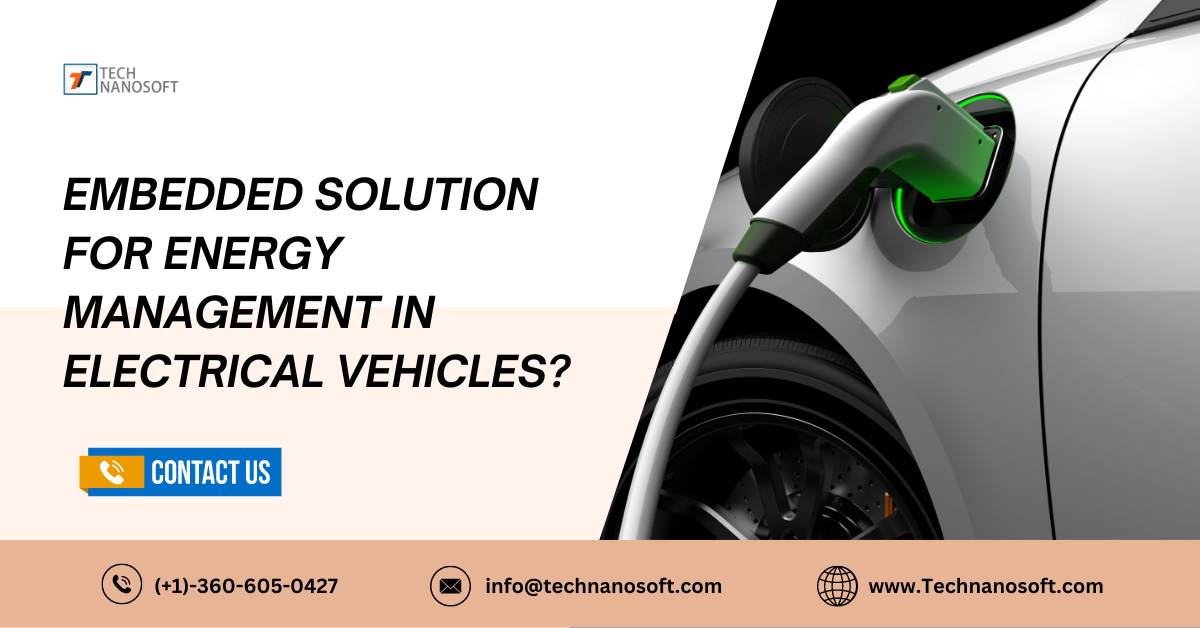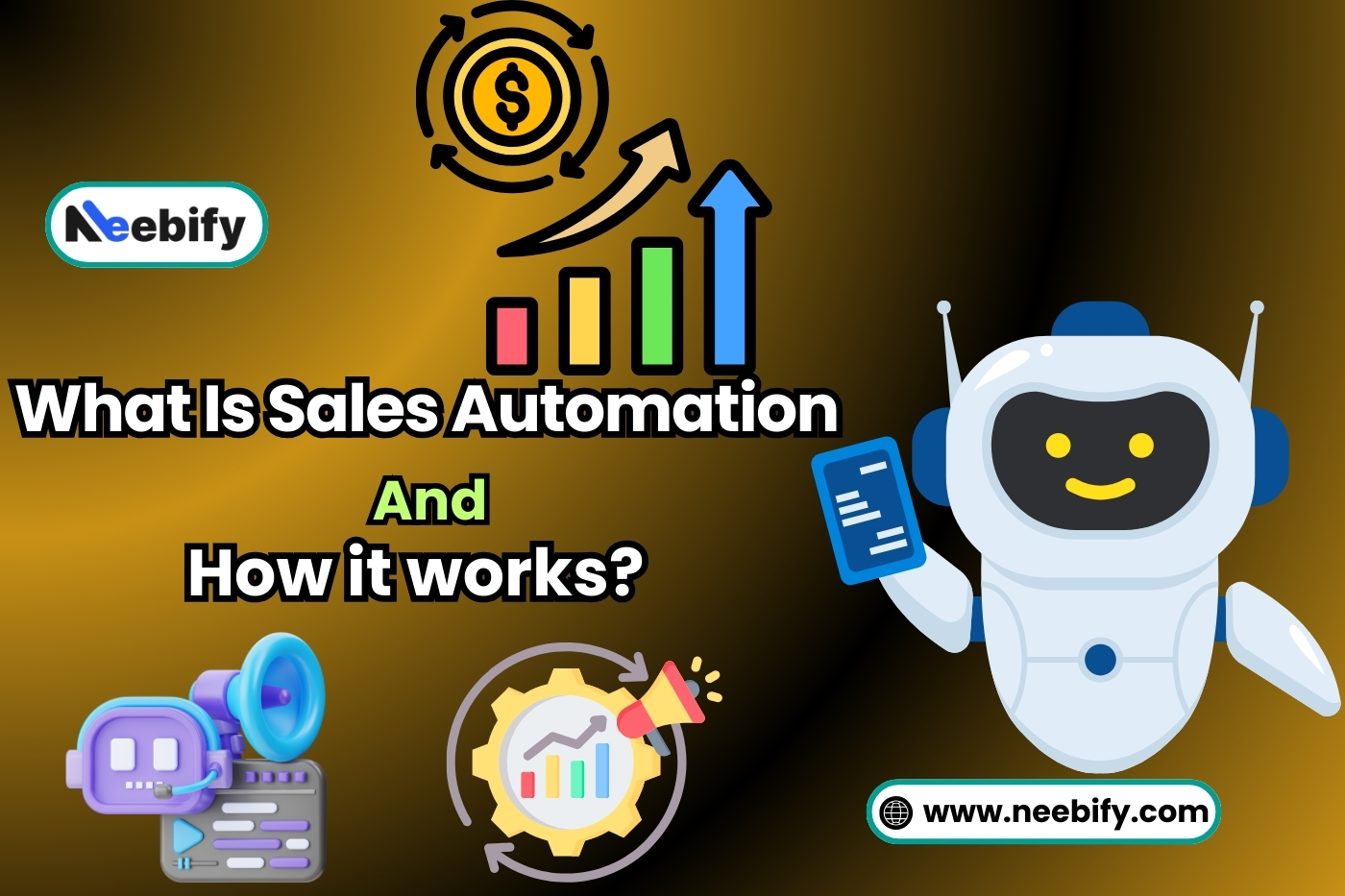Embedded Solution for Energy Management In Electrical Vehicles?

Introducing the transformative potential of Electric Vehicle Energy Management Systems (EVEMS). EVEMS is a revolutionary solution for electric mobility. It aims to transform our usage and interaction with electric vehicles in our constantly evolving world. EVEMS has numerous benefits for EV owners and the energy system. It improves energy use, battery performance, and connects with smart grid technologies.
Energy Management Systems In Electrical Vehicles
Electric Vehicle Energy Management Systems (EVEMS) are at the forefront of maximizing efficiency and sustainability in the burgeoning electric vehicle (EV) industry. Comprising intricate components and sophisticated algorithms, EVEMS orchestrates the optimal utilization of energy resources within EVs. By meticulously balancing factors such as battery health, range optimization, and charging strategies, EVEMS ensures a seamless user experience while promoting sustainable mobility.
EVEMS is crucial for linking EVs to smart grids, enabling bidirectional charging, vehicle-grid interaction, and demand response capabilities. It allows for bidirectional charging, vehicle-to-grid interaction, and demand response functions. EVs using technology can greatly impact grid stability and help transition to a greener future.
Essential Elements of Electric Vehicle Energy Management Systems
Battery Management System (BMS)
The Battery Management System (BMS) takes care of the batteries in electric vehicles. It immediately intervenes to avoid overcharging or discharging, maintaining battery health and longevity by continuously monitoring vital factors, including temperature, voltage, and current. The silent protector enhances the longevity of batteries and ensures their optimal performance, so augmenting the sustainability and dependability of electric vehicles.
Powertrain control unit (PCU)
The PCU is a smart controller that manages the energy flow in electric vehicles. It controls the battery, motor, and regenerative braking system to make the vehicle move. The PCU optimizes energy consumption and power delivery to increase driving range and improve overall vehicle efficiency. Its flawless integration advances the sustainability objectives of electric transportation while guaranteeing a smooth and thrilling driving experience.
Vehicle-to-Grid Interface (V2G)
The Vehicle to Grid interface is a significant advancement for electric cars. It allows EVs to exchange energy with the power grid in both directions. Electric cars can now provide energy to the grid when it requires more power.
Additionally, they can also draw energy from the grid. This is made possible due to advancements in technology. The V2G interface helps make the power grid more stable, resilient, and sustainable by using electric vehicles as mobile power sources.
Sensors
Sensors are important for electric cars, as they collect information about the car's surroundings and different aspects. Sensors provide important data on car performance and condition, including temperature, anomalies, speed, and battery level.
Electric cars are superior in fuel efficiency, reliability, and safety. This is because they have precise control and optimization of energy management systems. These systems are enabled by the abundance of data.
Communication Module
The Communication Module connects electric vehicle energy management systems (EVEMS) with charging stations and cloud platforms. This connection ensures smooth communication in the electric mobility network. This crucial component ensures smooth collaboration, enabling fast information sharing and granting control. It enhances energy efficiency and improves user experience.
Optimization in (EVEMS)
Optimizing Batteries
Sophisticated charging algorithms are used by electric vehicle energy management systems (EVEMS) to maximize battery longevity and health. These clever algorithms consider user preferences, the availability of renewable energy sources, and variations in grid power. EVEMS lessen battery stress by dynamically modifying charging methods, which mitigates degradation and increases battery life. This improves the efficiency and dependability of electric cars while also encouraging the efficient use of energy resources, which advances sustainability.
Maximizing Range
To make electric vehicles more useful and practical, their range must be maximized. By controlling power usage and efficiently utilizing regenerative braking energy, EVEMS are essential to this goal. EVEMS help electric vehicles travel longer distances on one charge by efficiently managing energy flow and distribution.
They ensure the efficient use of energy, maximizing the distance an electric vehicle can travel. The increased convenience and adaptability of electric vehicles as a result of this optimization increase their consumer appeal.
Fast Charging
EVEMS's smart charging solutions are revolutionizing the charging of electric cars in the era of smart grids and green energy. If you charge your device during off-peak hours, which are cheaper and better, you can make it work with the grid and your needs.
EVEMS uses complex scheduling formulas to make the most of charging intervals, lower users' energy costs, and reduce stress on the grid during times of high demand. This is good for both people who own electric cars and the energy ecosystem as a whole because it promotes sustainability and the economy.
Software Frameworks for Electric Cars
Collecting and Analyzing Data in Real Time
When it comes to electric cars, EVEMS are careful data collectors that gather a lot of different kinds of data, such as complicated driving patterns and battery health metrics. By collecting data in real time, EVEMS can make smart decisions that ensure the best efficiency and energy management for vehicles. By using the huge amount of data they have access to, EVEMS speed up the move to sustainable mobility solutions by making them more efficient, reliable, and customer-friendly.
Adaptive control systems
Intelligently designed adaptive control algorithms are at the heart of electric vehicle energy management systems (EVEMS). They can adapt quickly to changing conditions and customer preferences. These algorithms are always looking at real-time data streams and changing things like charging and discharging rates and motor power in order to get the most out of the energy they use and make the drive experience better.
The flexible structure of these algorithms makes sure that they work well with changing driving conditions and technology, which encourages efficiency and new ideas in electric transportation.
Cloud Based Integration
In this age of networked systems, many EVEMS use cloud-based integration to make their systems more efficient and better for users. They do this by using remote storage, analytics, and control features. EVEMS leverages cloud platforms to harness significant computer power for remote data analysis, predictive modeling, and management tasks.
By letting electric vehicles, grid systems, and charging infrastructure talk to each other and work together easily, this integration encourages new ideas and the ability to grow in sustainable transportation options.
Machine learning algorithms
Electric Vehicle Energy Management Systems (EVEMS) are finding that machine learning methods are powerful tools for improving energy management strategies. By looking at large amounts of data, algorithms can learn and change on their own.
Some of these types of data are driving habits, weather conditions, and what users do. This process of learning and adapting makes things work better and uses less energy. Machine learning techniques help EVEMS keep up with changing consumer tastes and needs by constantly adapting and improving. This encourages new ideas and long-term sustainability in electric transportation.
Embedded Systems' Function in EVEMS
Data Acquisition Units
These units, which are like the eyes and ears of the Electric Vehicle Energy Management Systems (EVEMS), get important data from sensors all over the car. They meticulously collect crucial data, such as monitoring the motor's temperature and battery voltage, and relay it to the control unit for informed decision-making and efficient energy utilization.
Communication Modules
Communication modules are the backbone of EVEMS because they make it possible for electric cars and outside systems to work together without any problems. These modules make sure that the cars can send and receive data and control orders correctly, whether they are talking to charging stations, cloud platforms, or other cars. Their ability to change and connect makes the system work better and improves the user experience.
Microcontrollers
Microcontrollers in ev energy management system components as silent orchestra conductors, ensuring smooth power flows and effective execution of control methods. These microprocessors change how the system works based on real-time data streams to make sure that it works as efficiently and quickly as possible. Electric vehicles are making technological progress thanks to their powerful computing skills and smooth operation.
Benefits of Sustainability and Future Prospects
Decreased Emissions
An important way that Electric Vehicle Energy Management Systems (EVEMS) help cut down on pollution is by making sure that electric vehicles run more efficiently. EVEMS cuts down on greenhouse gas pollution by a large amount. This slows down climate change and makes the air cleaner. They achieve this by effectively managing energy consumption and optimizing the utilization of clean power. To keep the earth and people healthy, it's important to cut down on pollution and encourage sustainability.
Renewable Energy Integration
EVEMS use vehicle-to-grid (V2G) technology to add renewable energy to electric cars, which makes it easier for them to live together. EVEMS lets electric cars store and trade clean energy from sources like the sun and the wind. This helps the environment and cuts down on the use of fossil fuels. Using clean energy sources speeds up the move to an energy future that is safe and good for the environment.
Improved Grid Stability
EVEMS make the grid more stable and long-lasting in two ways: demand reaction and bidirectional charging. By adding extra services, EVEMS makes the energy delivery system better. Some of these services include controlling frequency and lowering demand during busy times.
EVEMS also help keep the grid running. This makes the grid more stable, which leads to a more sustainable energy system. It lowers the risk of blackouts, makes sure there is always power, and makes it easier to use renewable energy sources.
Points to Consider for a Successful Smart Energy Management System
Performance Monitoring and Optimization
Monitoring and continuously improving system performance is crucial for identifying flaws and enhancing energy management. Businesses can take charge of their energy resources by using advanced tracking technologies and performance analysis tools.
This method not only makes operations more efficient, but it also lowers costs and has less of an effect on the environment over time. Using feedback systems ensures timely changes, resulting in improved energy efficiency and environmentally sustainable practices.
Awareness of The Present Situation
To handle energy well, you need to know about the current energy infrastructure and how people use it. Comprehensive energy tests and data analysis help businesses learn more about how they run and find places where they can improve.
Being aware of these things helps people make smart choices when designing energy management systems that meet their unique wants and goals. Companies can make the best use of resources and reach their long-term environmental goals by keeping up with changes in how people consume things.
Interoperability and Integration
For energy management systems to work as efficiently and effectively as possible, they need to be able to seamlessly integrate and talk to each other. Businesses make sure that their products are compatible with the current hardware, software, and devices so that data can be easily shared and communicated between different parts.
This interoperability speeds up processes, makes data more accurate, and lets you watch and control things in real time. When companies have integrated systems, they can use the benefits of different tools to save more energy and run their businesses better.
Selecting The Correct Software and Hardware
For energy management systems to collect and handle data correctly, they need to have the right hardware and software. Businesses ensure accurate tracking and efficient resource use by choosing reliable sensors, meters, controllers, and actuators. It's also important to choose software that is stable, flexible, meets scalability needs, and fits the needs of the company. This smart choice of technology makes integration possible, improves system performance, and backs up long-term environmental efforts.
Scalability
Scalability is important for meeting the needs of future growth, changing energy use trends, and new technologies in energy management systems. A system that is scalable can grow and change without needing major changes or extra money, which makes it flexible and cost-effective.
Businesses can ensure the future viability of their operations and adapt to market and regulatory changes by creating expandable solutions. With this kind of flexibility, businesses can stay competitive and grow in the long term.
Managing Cyber Risk
Smart energy management systems must be protected against possible cyber threats and weaknesses with strong cybersecurity measures. Businesses use strong security protocols, encryption methods, and access controls to prevent unauthorized individuals from accessing and changing their important data and systems.
Regular updates and proactive tracking help reduce risks and maintain the integrity and dependability of the system. Setting cybersecurity as a top priority builds trust in energy management systems, which leads to more acceptance and compliance with rules.
User Interaction and Training
Engaging and teaching users are very important for making sure that energy management systems are used and adopted successfully. Businesses give users the tools they need to take part in energy-saving projects and get the most out of the system by giving them full training and help.
Teaching users about system functions, best practices, and energy-saving strategies fosters a culture of sustainability within the company. Encouraging users to get involved builds ownership and accountability, which leads to ongoing improvement and good results in energy management efforts.
Difference Between Power Manegement and Energy Management System
Power Management System (PMS)
centered mostly on the dependability and accessibility of electricity. It keeps the power supply steady, guards against overloads, distributes power efficiently, and guarantees that vital equipment is operating as intended.
Energy Management System (EMS)
centered on cutting expenses and maximizing energy use. Tracks energy use, pinpoints areas for efficiency growth, makes recommendations for energy-saving tactics, and incorporates renewable energy sources.
Scope
PMS (Power Management System): PMS monitors specific equipment or power circuits inside a building or facility by operating at the equipment level. It guarantees the effective operation and management of certain equipment to maximize performance and energy consumption locally.
An Energy Management System: Monitors energy use throughout buildings, campuses, or entire energy grids on a larger scale. Throughout large-scale energy systems, it coordinates and optimizes energy usage, utilizing data and control mechanisms to improve efficiency, lower costs, and promote sustainability.
Metrics
Power Management System: PMS primarily monitors power quality indicators such as frequency, voltage, current, and power factor. PMS closely monitors factors. It ensures a reliable and stable power supply in specific systems. It improves efficiency and minimizes the risks associated with power quality issues.
Energy Management System (EMS): EMS takes into account indicators related to energy consumption, including energy usage, peak demand, energy prices, and carbon footprint, in addition to metrics related to power quality. By studying this data, EMS can identify energy usage patterns and find ways to improve efficiency. It facilitates strategic decision-making aimed at optimizing energy use and mitigating environmental effects.
Control Functions
PMS (Power Management System): To control power flow and preserve stability within localized systems, PMS mainly uses control mechanisms such as turning on and off devices, modifying voltages, and regulating loads. At the equipment level, these control functions guarantee effective functioning and maximize performance.
EMS (Energy Management System): To estimate energy demand, schedule loads, and suggest cost-effective energy solutions, EMS may use predictive algorithms and optimization approaches in addition to basic control capabilities. Large-scale energy systems can benefit from proactive energy management, cost reduction, and efficiency maximization because of EMS's use of automation and sophisticated analytics.
READ ALSO- What are IOT notification services, and how does IOT work?
TechnanoSoft's Approaches to Revolutionize Embedded Software Solutions for EV
At TechnanoSoft, we're committed to pioneering the future of electric mobility through our cutting-edge embedded software solutions. Our EMS for EVs are highly innovative, optimizing energy use and improving performance while seamlessly integrating with smart grid technologies. With TechnanoSoft's expertise, electric vehicles become more than just transportation they become eco-friendly, intelligent solutions driving us towards a sustainable future.
Join us as we lead the charge towards cleaner, greener mobility with our advanced embedded software services. Together, let's shape a brighter tomorrow powered by TechnanoSoft's revolutionary technology.
FAQ's about Energy Management System in Electrical Vehicles
Q.1- What is the purpose of an Electric Vehicle Energy Management System (EVEMS)?
A- A complex system called an EVEMS is made to maximize the efficiency and energy use of electric cars (EVs). To make it better and easier for users, it manages different factors like battery health, range optimization, and charging methods.
Q.2- How does an Energy Management System for Electric Vehicles (EVEMS) operate?
A- EVEMS monitors and controls the flow of energy inside electric vehicles using sensors, algorithms, and control mechanisms. To increase range and save energy, it collects live information on driving habits, battery levels, and environmental conditions.
Q.3- What are the advantages of putting an EVEMS (energy management system in electric vehicle) in place?
A- EVEMS provides several benefits. These include longer battery life, increased driving range, faster charging, better energy efficiency, and enhanced integration with smart grid technology.
Q.4- Is it possible to lower emissions with an electric vehicle energy management system (EVEMS)?
A- Indeed, by encouraging the effective functioning of electric vehicles, EVEMS significantly contributes to the reduction of emissions. It helps reduce greenhouse gases and fight climate change by using renewable energy and managing energy consumption.
Q.5- Are owners of electric vehicles required to have an Electric Vehicle Energy Management System (EVEMS)?
A- Owners of electric vehicles need an EVEMS to maximize their car's lifespan, performance, and efficiency. It guarantees the best possible energy management and charging techniques, which improves driving and lowers operating costs.









